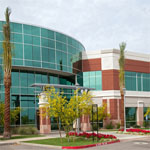
Signing a commercial lease is a natural part of doing business for many companies, and yet, the process can lead to future problems if you’re not careful. There are few consumer protection laws as it pertains to commercial leases, many leases are long-term, and most are drafted by the lessor. So before you sign your next lease, it is critically important to do these two things in order to mitigate your risk:
- Read the unsigned lease and underline any areas you don’t understand.
- Forward a draft of the lease to your attorney or agent so they can also review it and answer any questions that you have.
Below are definitions of some key terms that we often see in leases:
- Triple net lease (NNN): With this type of lease, the lessee is responsible for paying a base rent plus a proportionate share of real estate taxes, insurance, and maintenance. These amounts are typically estimated based on the prior year and are trued up at month-end when the actual costs have been finalized. Make sure you’re prepared for the variability of these numbers. For instance, if you have a severe winter, chances are that you will owe more at year-end because of the snowplowing required.
- Free rent period: If implemented, this is the timeframe at the beginning of the lease that is “free” until the free rent period expires. If the lease is triple net, the free rent period may or may not include the additional tax, insurance, and maintenance costs described above; you need to read the lease in detail to make sure you know exactly what is “free.”
- Build out costs/fitout costs: As the name suggests, build out or fitout costs are the costs involved in finishing a raw space or building it to your company’s specifications. These costs are usually paid by the lessor and amortized into the rent over the lease period (including interest). If you terminate the lease early, the unamortized portion of these costs typically becomes due.
During the lease negotiating process, it’s helpful to keep these tips in mind:
- The longer the lease term, the lower the rent should be.
- Only the build out costs that are specific to your business should be included. For example, if you are renting a warehouse and there is no existing office space, you should not have to pay to construct a few offices. Every other lessor of that building is also going to want some office space, so the buildout of that space should be the lessor’s responsibility.
- Research comparable rents in the area to determine whether the rate you’re being quoted is competitive.
- The landlord’s costs are typically fixed, yet there is almost always an escalation clause that covers the lease term. Be sure you understand any of these “hidden” costs.
- Make sure the following items are determined up-front and spelled out in the lease agreement:
- How shared resources will be maintained and who will pay for the maintenance
- The amount of the security deposit and how and when it will be returned
- Whether the lease can be assigned or subleased to another tenant
- Lease termination clauses
- Building signage
- Who will pay for fitout and what will be considered part of the building when you decide to exit
- Whether you want to limit any competition from neighboring sites owed by the same realtor
- The exact space you are renting and the common areas that you will be able to access
- If there is a major tenant that drives a lot of traffic to the building, whether your rent will be lowered if that tenant leaves
Reviewing a proposed lease agreement in detail and asking questions up front – before you sign – can save you a lot of potential time and aggravation down the road.
David E. Shaffer is a director with Kreischer Miller and a specialist for the Center for Private Company Excellence. Contact him at Email.
is a director with Kreischer Miller and a specialist for the Center for Private Company Excellence. Contact him at Email.
You may also like:


